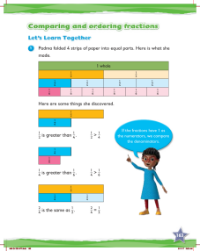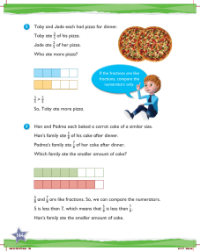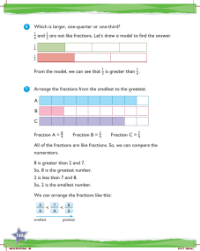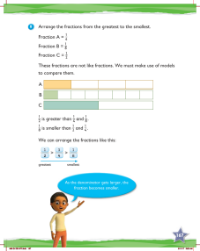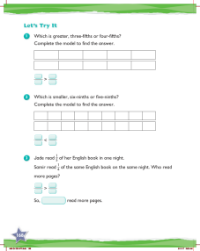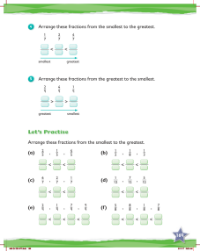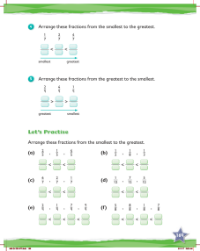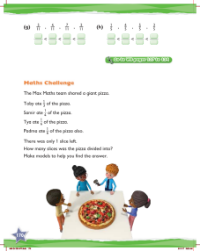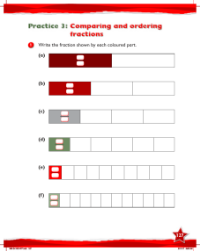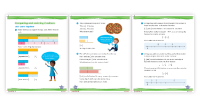Max Maths, Year 4, Learn together, Comparing and ordering fractions (3)
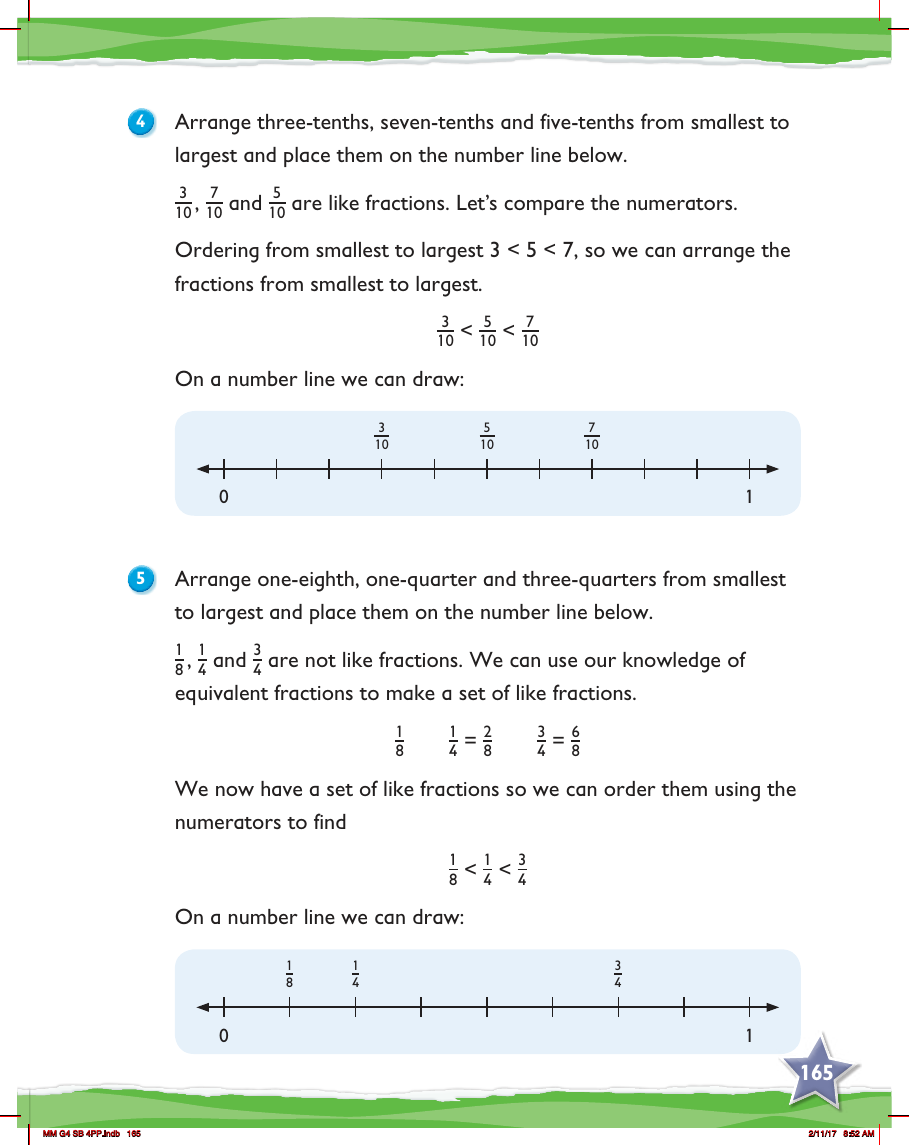
Maths Resource Description
In a Year 4 mathematics lesson, students are learning to compare and order fractions. One of the exercises involves arranging fractions with the same denominator, known as like fractions. The task at hand is to organise three-tenths, seven-tenths, and five-tenths in ascending order. To achieve this, the students are instructed to focus on the numerators since the denominators are identical. By comparing the numerators, they deduce that three-tenths is the smallest, followed by five-tenths, and then seven-tenths is the largest. The correct order is thus three-tenths, five-tenths, and seven-tenths. This sequence is then visually represented on a number line, helping to reinforce the concept of ordering fractions.
The lesson continues with a slightly more complex task that involves ordering fractions with different denominators, known as unlike fractions. The fractions to be ordered are one-eighth, one-quarter, and three-quarters. To compare these, students use their understanding of equivalent fractions to convert them into like fractions with a common denominator. One-quarter is equivalent to two-eighths, and three-quarters is equivalent to six-eighths. Now, with a set of like fractions, the students can easily compare them by looking at the numerators. The order from smallest to largest is one-eighth, one-quarter, and three-quarters. This ordered set is then also plotted on a number line to visually display the size of each fraction relative to the others.
